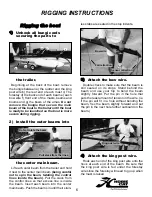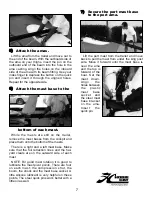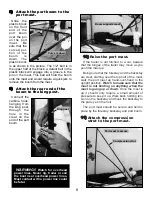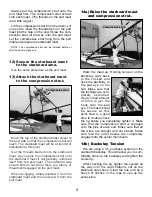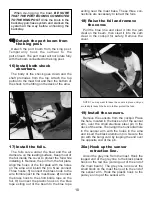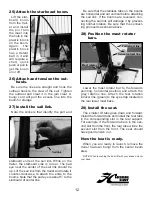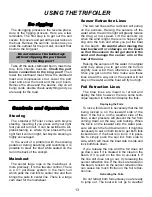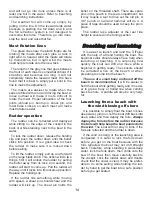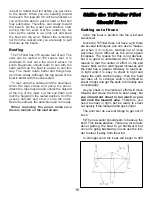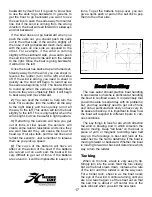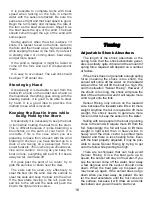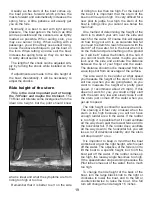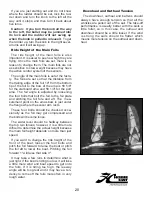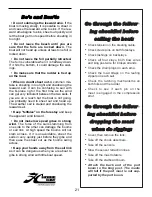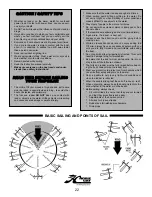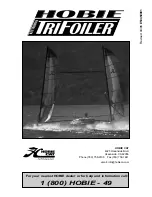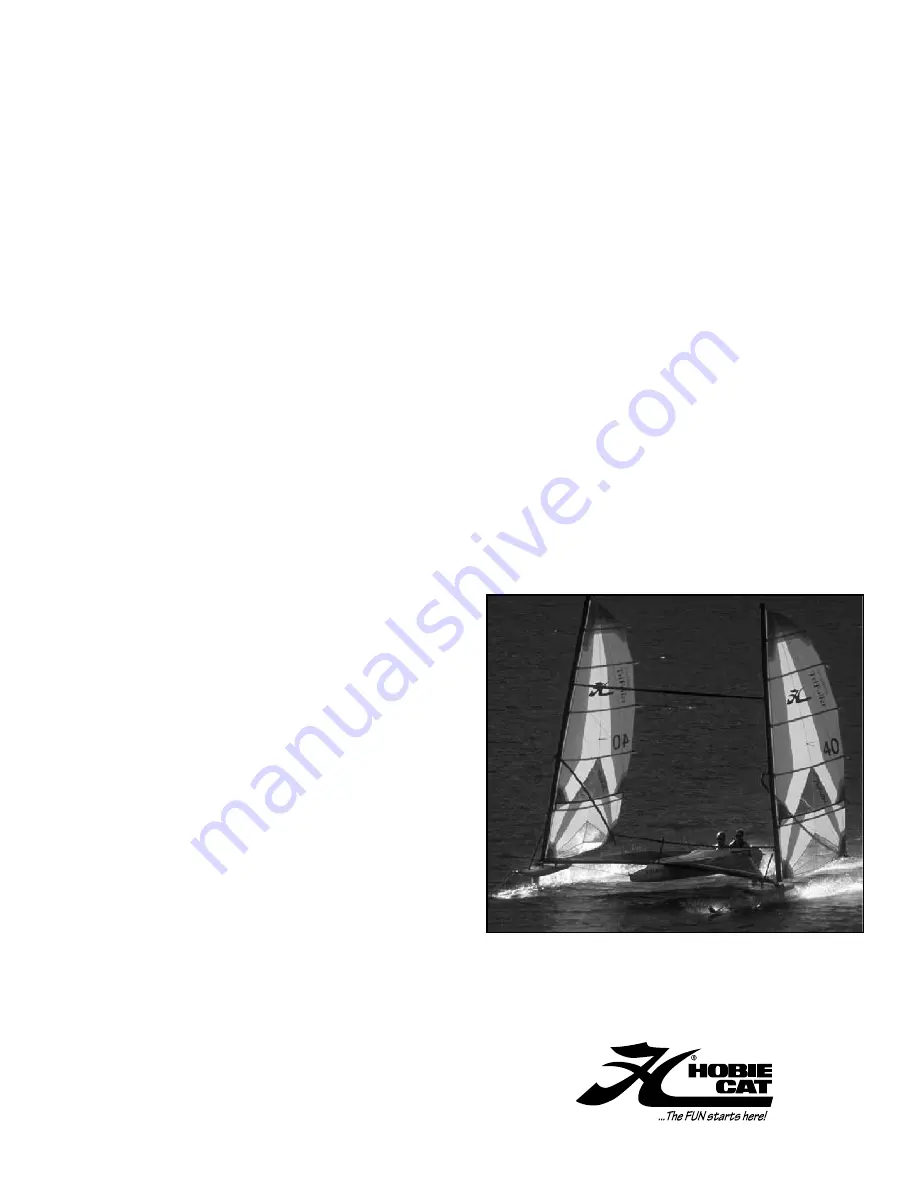
If you are just starting out and do not know
where the rudder should be set, lock the rud-
der down and turn the knob to the left all the
way until it stops; and then turn it back about
five turns.
Caution:
If you turn the knob all the way
to the left, the bullet may be jammed into
its lock and the rudder will not swing up
when the knob is pulled to release it
. To get
the rudder up, turn the knob to the right sever-
al turns and it will swing up.
Ride Height of the Main Foils
The ride height of the main foils is also
important. It is easier to see how high they are
flying. Once the main foils are set, there is no
reason to change them. The main foils are not
as sensitive to crew weight because they have
the active control system of the sensors.
The angle of the main foils is set at the facto-
ry. The foils are set so that the distance from
the trailing edge of the foil 10" from the bottom
tip of the foil to the bow of the ama is 58 5/8"
for the starboard ama and 58 1/4" for the port
ama. The foil angle is adjusted by loosening
the four bolts that bolt the foil to the foil plate
and pitching the foil fore and aft. The mea-
surement point on the amas bow is just under
the flange where the sensor arm rests.
These four bolts should be checked occa-
sionally as the foil may get compressed and
the bolts will become loose.
The water level should be halfway between
the top two fences; however, it is a little more
difficult to determine the actual height because
the main foil height depends on more than just
speed.
If you want to change the ride height of the
front of the boat, loosen the four bolts and
pitch the foil forward to raise the boat or pitch
the foil aft to lower the boat. Pitching the foil
forward 1" will raise that side 3".
It may take a few runs to determine what is
just right. If the boat is riding too low, it will take
a little more wind and boat speed to get onto
the foils. If it is riding too high, the leeway
angle will be too great and it may have a ten-
dency to come off the foils more often in very
rough water.
Downhaul and Outhaul Tension
The downhaul, outhaul and battens should
always have enough tension so that all the
wrinkles are pulled out of the sail. The take-off
performance is usually better with the sails a
little fuller, so in this case, the outhaul and
downhaul should be a little looser. If the wind
is strong the sails should be flatter which
means more tension on the outhaul and down-
haul.
20
Summary of Contents for TriFoiler
Page 1: ...ASSEMBLY MANUAL...

